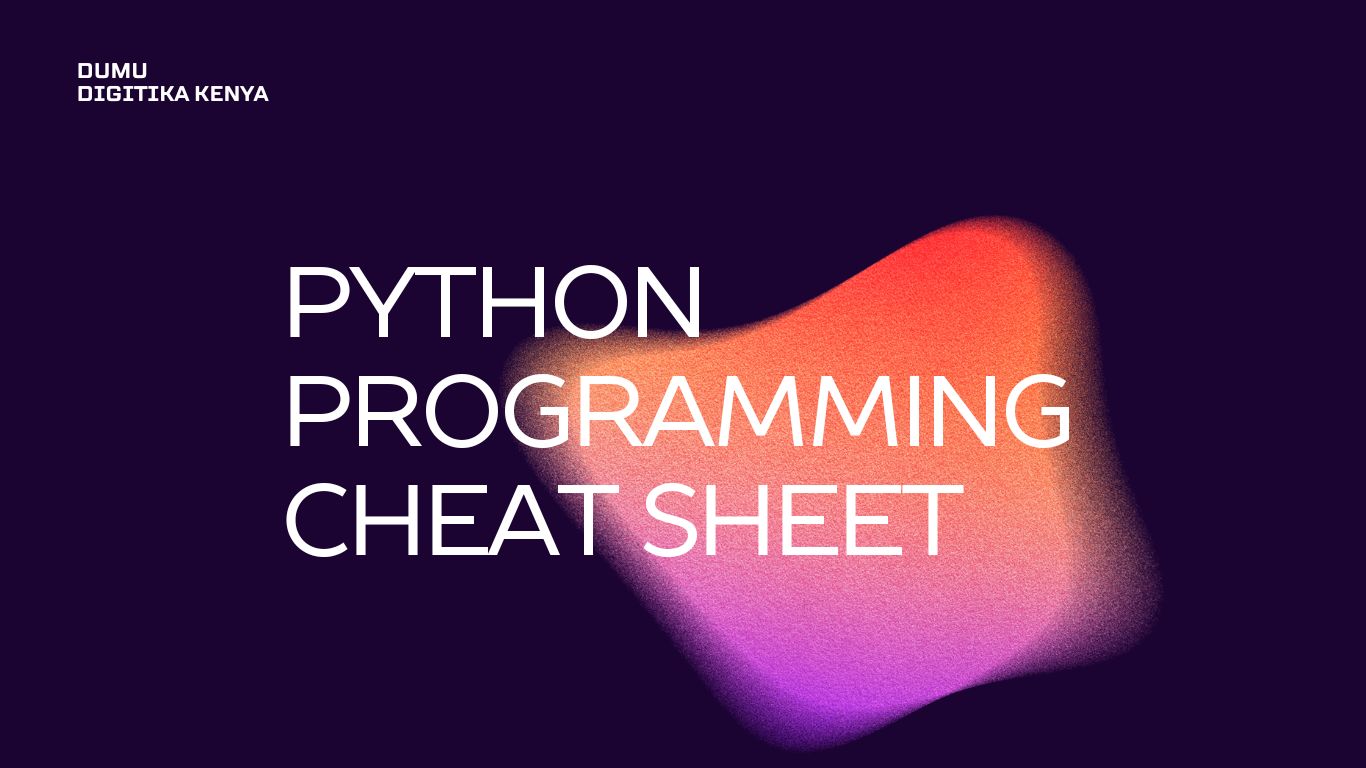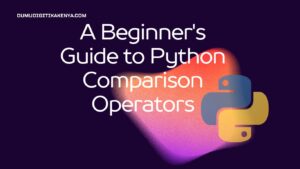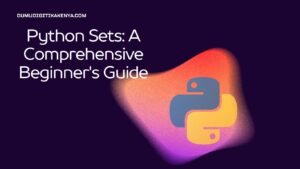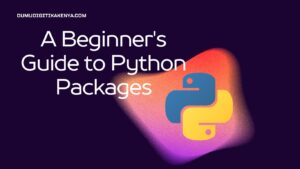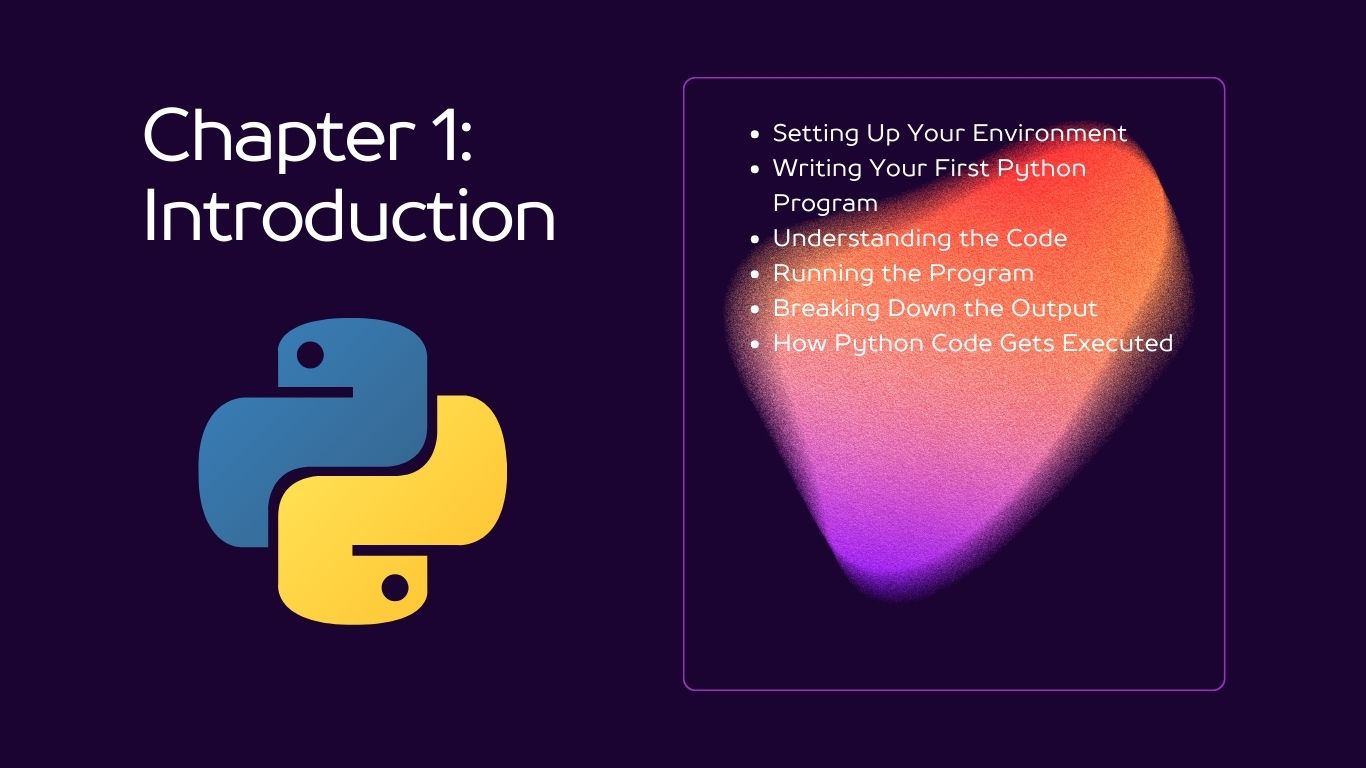
Are you intrigued by the world of programming and eager to take your first steps into the realm of coding? Look no further! In this comprehensive tutorial, we’re delving into the exciting universe of Python programming—a language renowned for its simplicity and versatility. Whether you’re a complete beginner with no prior coding experience or a seasoned techie exploring a new language, our step-by-step guide will walk you through the creation of your first Python program. Get ready to unlock the door to endless possibilities as we start your journey with the timeless tradition of writing a “Hello, World!” program. Through this engaging exercise, you’ll not only grasp the fundamental concepts of Python but also establish a solid foundation for all your coding endeavors to come.
Table of Contents
Step 1: Setting Up Your Environment
Before we start writing our first Python program, make sure you have Python installed on your computer. You can download Python from the official website: python.org. Follow the installation instructions based on your operating system.
Once Python is installed, you can open a terminal or command prompt to access the Python interpreter. To check if Python is installed correctly, type python or python3 (depending on your installation) and press Enter. You should see the Python version information.
Downloading A FREE Python Programming IDE – Pycharm.
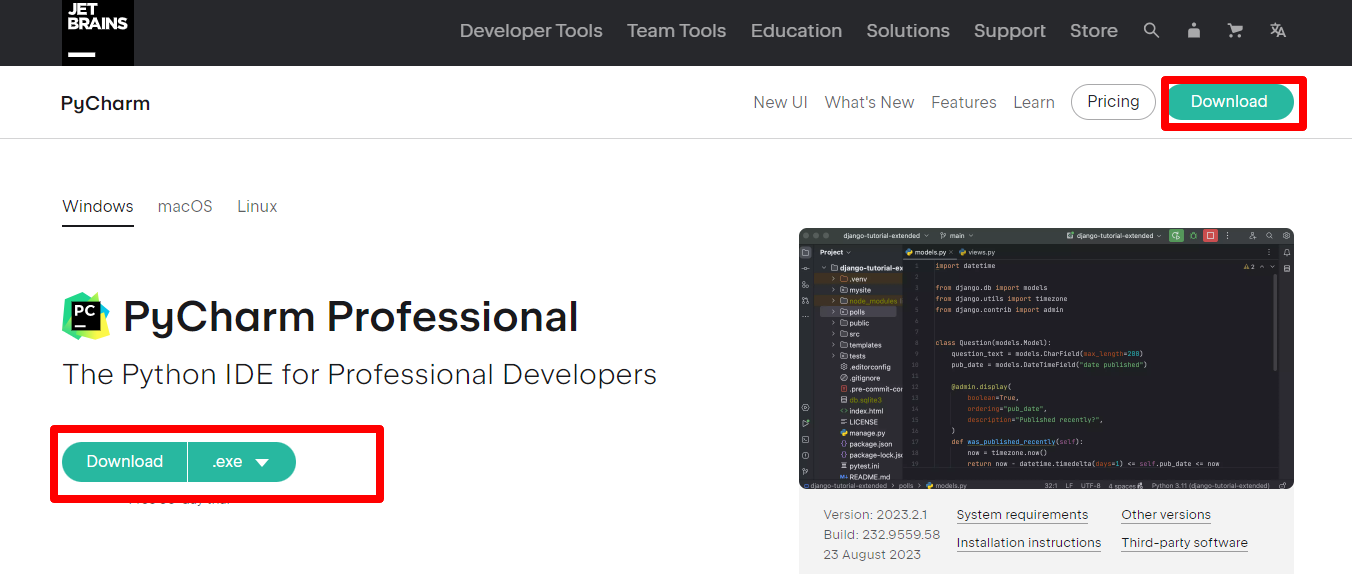
While Python’s built-in IDLE provides a straightforward way to write and execute code, harnessing the power of a specialized Integrated Development Environment (IDE) can enhance your programming experience significantly. JetBrains’ PyCharm stands out as one of the most popular and feature-rich Python IDEs available, catering to beginners and experts alike. To streamline your coding journey, start by downloading PyCharm from the official website, jetbrains.com/pycharm. The Community edition offers a robust set of tools for free, making it an excellent choice for newcomers.
Upon installation, PyCharm welcomes you with a user-friendly interface that assists in every aspect of Python programming. Its intelligent code completion, error highlighting, and real-time suggestions elevate your coding efficiency, helping you write accurate code swiftly. The integrated debugger simplifies identifying and fixing errors, ensuring your programs run seamlessly. Moreover, PyCharm offers seamless integration with version control systems like Git, empowering you to collaborate on projects effortlessly. With its unparalleled features and user-friendly interface, PyCharm becomes your trusted companion in your Python programming journey, enabling you to focus on writing exceptional code.
Step 2: Writing Your First Python Program
Now that we have Python installed, let’s write our “Hello, World!” program.
Open a text editor or integrated development environment (IDE) such as Visual Studio Code, PyCharm, or IDLE (comes bundled with Python).
Type the following code into the editor:
print("Hello, World!")
Step 3: Understanding the Code
print(): This is a built-in Python function that outputs text to the console."Hello, World!": This is the string (a sequence of characters) that we want to display.
Step 4: Running the Program
Save the file with a .py extension, for example, hello_world.py.
Click on run if using Pycharm.
If using your terminal or command prompt then navigate to the directory where you saved the file using the cd command (change directory).
Type python hello_world.py and press Enter. You should see the output:
Hello, World!

Step 5: Breaking Down the Output
Hello, World!: This is the output of our program, which is the text we provided inside the print() function.
How Python Code Gets Executed
When you run a Python program, the following steps occur:
Lexical Analysis (Tokenization):
This process serves as the initial phase of code interpretation, breaking down your code into smaller units known as tokens. These tokens, such as keywords, operators, and identifiers, serve as the building blocks of your Python programs.
In Python programming, the lexical analysis process occurs before your code is executed. The Python interpreter analyzes each line of your program, identifying and categorizing tokens based on their roles in the code structure. This meticulous dissection enables the interpreter to understand the sequence of operations and execute them accurately. By comprehending lexical analysis, you gain insight into how Python translates your code, allowing you to write more efficient and error-free programs.
As you continue your Python programming journey, keep in mind that while understanding lexical analysis isn’t a prerequisite for writing code, it empowers you to become a more proficient programmer. Embrace the process of tokenization as a stepping stone toward mastering Python’s syntax and unlocking the full potential of your coding creations.
Syntax Analysis (Parsing):
In the realm of Python programming, delving into the intricacies of syntax analysis, also known as parsing, is a pivotal step toward mastering the language’s syntax and structure. As you progress beyond the basics, understanding how Python interprets and executes your code becomes paramount. Syntax analysis involves the examination of your code’s structure, ensuring it adheres to the rules and grammar of the Python language.
During the syntax analysis phase, Python checks whether your code follows the prescribed syntax rules. This involves verifying the placement of parentheses, quotation marks, indentation, and more. If your code passes this scrutiny, it’s deemed syntactically correct and moves on to the subsequent stages of execution. However, if any errors are detected, Python raises a syntax error, pinpointing the issue’s location, which aids immensely in troubleshooting and debugging.
Mastery of syntax analysis fosters the creation of robust and error-free Python programs. By understanding how Python parses your code, you’re better equipped to write code that not only functions correctly but also follows best practices for readability and maintainability. Dive into the world of syntax analysis to elevate your Python programming skills and unlock the full potential of your coding endeavors.
Semantic Analysis:
This phase transcends syntax and dives into the meaning behind your code. Semantic analysis ensures that your code is not only syntactically correct but also logically sound, aiming to catch inconsistencies that might lead to runtime errors or unexpected behavior.
In Python programming, semantic analysis involves interpreting the semantics of your code, considering the context in which statements and expressions appear. Python’s dynamic nature can make identifying semantic errors more challenging, as issues may not surface until runtime. However, by gaining a solid understanding of semantic analysis, you can preemptively identify and rectify potential pitfalls, making your programs more reliable and efficient.
Incorporating semantic analysis into your programming skill set elevates you from a novice coder to a proficient developer. By refining your ability to identify and correct logical errors, you create code that aligns with your intentions and produces the expected results. As you progress in your Python programming journey, remember that while mastering syntax is essential, delving into semantic analysis empowers you to create robust, error-resistant code that stands out in the programming landscape.
Intermediate Code Generation (Optional):
Intermediate code serves as an intermediary step between the high-level Python code you write and the machine code executed by the computer’s processor. It simplifies the translation process and enhances optimization possibilities. While Python is an interpreted language, some tools and scenarios may involve generating intermediate code, which is then executed by an interpreter or a virtual machine.
Gaining familiarity with intermediate code generation can be particularly valuable if you’re interested in exploring the inner workings of Python’s execution model, creating custom tools or optimizing performance-critical applications. However, for most Python programming tasks, a solid understanding of the language’s core concepts and features suffices. Feel free to delve into intermediate code generation if you’re curious and eager to explore Python programming at a deeper level.
Bytecode Generation:
This intermediate step in the Python execution process involves translating your human-readable code into a lower-level representation called bytecode. Bytecode is a set of instructions that the Python interpreter can execute directly, bridging the gap between your code and the machine code executed by your computer’s processor.
When you run a Python script, the Python interpreter compiles your code into bytecode. This bytecode is stored in .pyc files, known as “compiled Python files.” These files allow for faster execution upon subsequent runs, as the interpreter can skip the compilation step and directly execute the bytecode. While the bytecode itself isn’t meant to be human-readable, it’s a crucial part of Python’s execution model, enabling portability and efficient execution across different platforms.
Understanding bytecode generation provides a deeper insight into Python’s runtime behavior and optimization strategies. While most Python programmers need not interact directly with bytecode, having a foundational knowledge of this process can enhance your overall comprehension of Python’s inner workings and its efficiency. By comprehending how your code transforms into bytecode and executes, you’re better equipped to write more optimized and performant Python programs.
Execution:
The interpreter executes the bytecode line by line. It interacts with the system to perform actions like printing, reading from files, etc. In our case, it prints “Hello World” to the console.
Conclusion:
Congratulations! You’ve successfully written and executed your first Python program, displaying the iconic “Hello, World!” message. This small achievement marks the beginning of your programming journey. From here, you can explore more complex Python concepts, data types, control structures, and eventually build your own applications.
Remember, programming is a skill that improves with practice. As you progress, try experimenting with different variations of the “Hello, World!” program or move on to more challenging projects. Happy coding!

